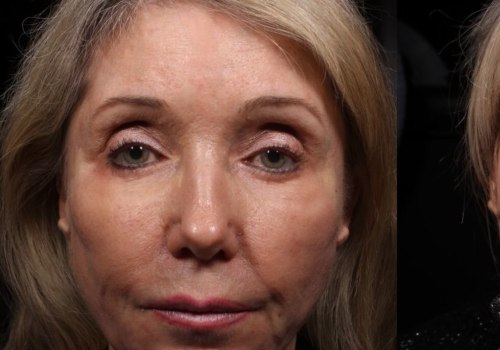Aging causes a loss of facial fat, especially around the cheeks, eye area, double chin and neck. This is accompanied by the aging of the skin, where the elastic fibers of the skin become thinner and cause the loss of facial elasticity. Both processes result in a longer face and wrinkles because the “facial scaffolding” cannot provide as much support. Thread lifts or suture lifts involve the use of threads or sutures made from materials used in surgery to close wounds.
When threads are placed under the skin, they can tighten and lift loose or loose areas on various parts of the face and body to help reduce the effects of gravity and aging, or they can be used to rejuvenate the face. Three main types of threads are currently available; polydioxanone (PDO), polylactic acid (PLA) and polycaprolactone (PCA). PDO threads have been around longer and are made from a biodegradable synthetic polymer that has been used in surgery for many years. They are absorbed into the body for 6 months by hydrolysis and work by activating fibroblasts to produce more collagen in a specific area.
PLA threads take about 12 months to absorb and PCA takes about 12 to 15 months. Each type of thread is best suited for a particular function. PDO yarns are better at repositioning and revitalizing the fabric, while PLA and PCA yarns are better at lifting sagging parts of the skin. Silhouette Soft yarns are in fashion in Europe and the United States.
They are made of PLLA material. PDO yarns are all the rage in Asia, originating in Korea. Three main types of PDO threads are used; mono-, serrated and screw threads. Mono threads are smooth, barbless and anchored to a point on the face or scalp.
They primarily tighten the skin and provide a small amount of lift, 2-tooth threads have barbs that hook to the skin to provide support and lift the sagging tissue. The screw threads have one or two threads intertwined around the needle and provide good volume restoration in the sunken areas of the skin. Collagen production around the threads and their barbs helps restore volume and improves skin texture and elasticity, resulting in a natural aesthetic result. After the PDO yarns, PLA yarns were developed. They are made from a biocompatible polymer derived from lactic acid that has been used in many applications, such as nails and orthopedic sutures.
PLA threads are resorbable and regenerate collagen for longer than PDO threads. PLA threads use cones to engage the tissue and increase the volume of the fallen areas, thus helping to restore the shape of the facial area and provide a lift. PCA yarns are the newest yarns and are bioabsorbable monofilament suspension yarns of synthetic origin (caprolactone). They leave behind a collagen structure that provides support to the skin, tightens the skin and prevents it from falling out. Due to the fibrotic reaction caused by the threads, the lifting and stretching action will continue even after the threads have been resorbed. The barbs must have a length that allows them to hook to the skin tissue and maintain the required elevation.
If they are too long, they become too flexible and unable to lift facial tissue. On the other hand, if the barbs are too short, they will not be able to hook to the facial tissue in the first instance. In addition, we need to consider how densely the barbs are placed along the length of the thread. Threads with a low barbed density will not be able to lift as much tissue as those with a high barbed density. In addition, low-density barbed yarns will be less effective in lifting larger volumes of heavier tissue or tissue and will restrict practitioners to work with only small amounts of soft tissue.
Of course, a thread should have smooth areas that are free of barbs to ensure that there is proper anchoring and to avoid any wrinkling of the skin. The angles of tines also play an important role in terms of how much clamping is achieved. If they are too small, elevation will be weak; on contrary if they are too large, barb may dig into thread causing it to break. The manufacturing process of some threads can cause barbs to dig into thread reducing their thickness or gauge in areas. Ideally length of barb base should be equal to thickness of thread. The spatial distribution of barbs along thread will also vary; more contact between barbs & facial tissue better fastening. Some threads have barbs at different angles for 360° elevation; some have cones for maximum tissue contact while others have all barbs aligned in single line. Threads can come as one-way or two-way; bi-directional threads preferred for effective lifting facial tissue. So which thread lift is best? It depends on individualized facial vectoring & minimal downtime required for each type of thread lift procedure.




